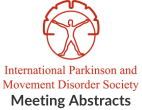Transcranial Direct Current Stimulation and Neurofunctional Physical Therapy Improves Motor and Cognitive Symptoms in a Patient with Type 1 Spinocerebellar Ataxia – A Case Report
Objective: The aim of this research was to develop and verify the effects of a Non-Invasive Neuromodulation protocol associated with Neurofunctional Physiotherapy on motor functions,…White Matter Tractography in Spinocerebellar Ataxia type 1 and 2 in comparison with Healthy Controls
Objective: To assess and quantify microstructural white matter atrophy in brain of spinocerebellar ataxia (SCA) types SCA1 and SCA2 patients in comparison with healthy subjects.…Non Classified Spinocerebellar Ataxia-like Syndrome due to GYG-1 gene mutation with TPM3, GEMIN5 and DES mutations in a Peruvian family
Objective: To report a GYG1 mutation in a Peruvian family presenting as a non classified Spinocerebellar Ataxia (SCA) with added GEMIN5, DES and TPM3 mutations.…Case Report of Spinocerebellar Ataxia 13 Presenting with Pure Cerebellar Ataxia
Objective: We report the spinocerebellar ataxia 13 (SCA13) patient who demonstrated childhood-onset pure cerebellar ataxia. Background: SCA13 is a rare cause of autosomal-dominant cerebellar ataxia,…Tremulous Machado-Joseph Disease
Objective: To describe a case of spinocerebellar ataxia type 3 (SCA3) presenting with tremor. Background: Tremor is not a frequent manifestation in SCA3, especially as…Fixel Analysis of Diffusion Imaging in Cerebellar Tracts as a Quantitative Marker of Disease Progression in Spinocerebellar Ataxia
Objective: This study aimed to identify white matter changes in the brain of presymptomatic and early-stage SCA1 and SCA3 mutation carriers using fixel-based analysis of…Spinocerebellar ataxia type 2 (SCA2) and Seizures: Is There a Correlation?
Objective: We describe 3 patients of SCA2 with seizures, a rare phenomenology. Background: Spinocerebellar ataxia (SCA) is a heterogenous group of autosomal dominant neurodegenerative ataxic…4-Aminopyridine improves downbeat nystagmus in SCA27b: A case report
Objective: To assess objective clinical improvement in video-oculography in a patient with SCA27b on 4-aminopyridine (4-AP) treatment. Background: Spinocerebellar ataxia 27b (SCA27b; MIM 620174) is…Mixed Cerebellar Ataxia in a Patient with a Novel FAT2 Gene Variant Associated with SCA45
Objective: We describe a patient with late-onset ataxia, cognitive impairment, and parkinsonism with a novel missense variant in FAT2, a gene implicated in spinocerebellar ataxia…A Head-Turning Case of SCA10 with Dystonia
Objective: Present a SCA10 patient presenting with rare phenomenology of dystonia in addition to ataxia. Background: The spinocerebellar ataxias (SCAs) are a heterogenous group of…
- « Previous Page
- 1
- 2
- 3
- 4
- 5
- …
- 16
- Next Page »
